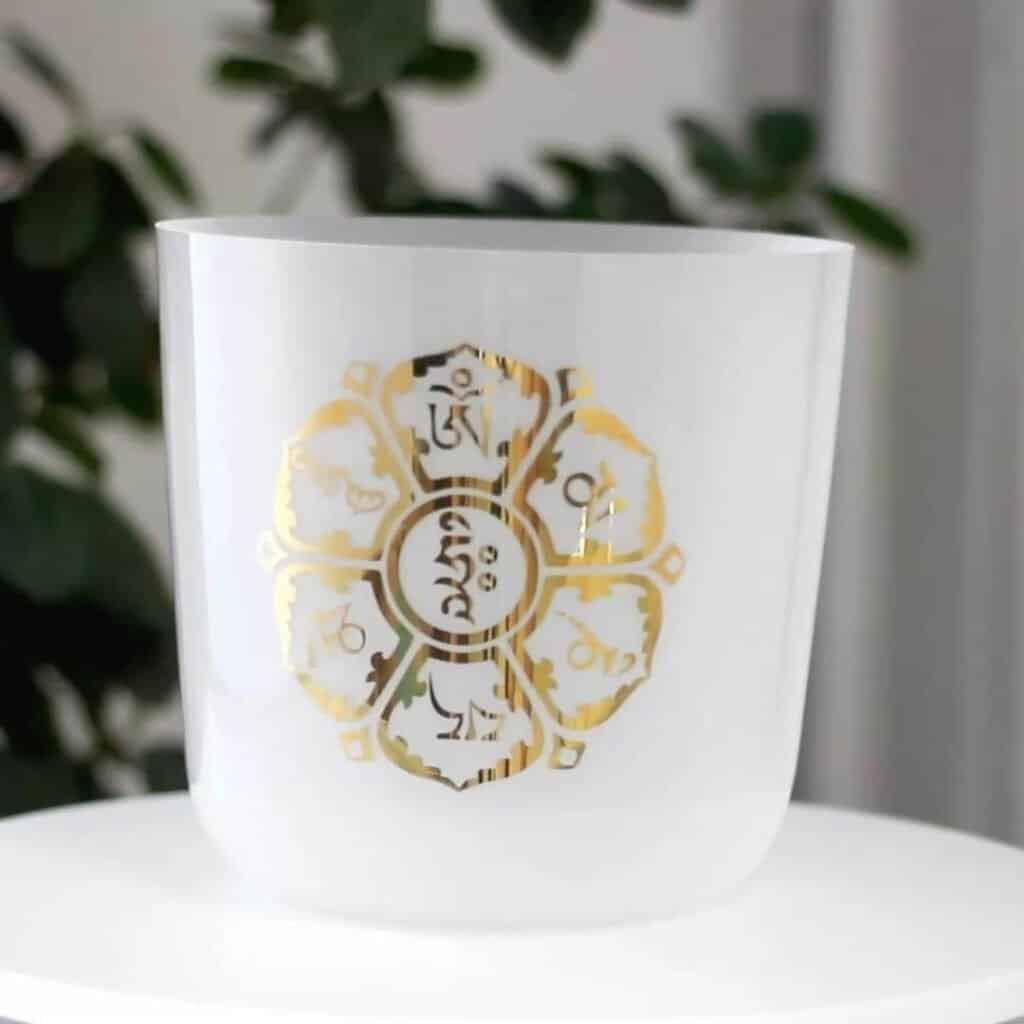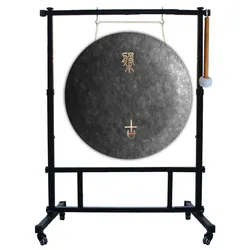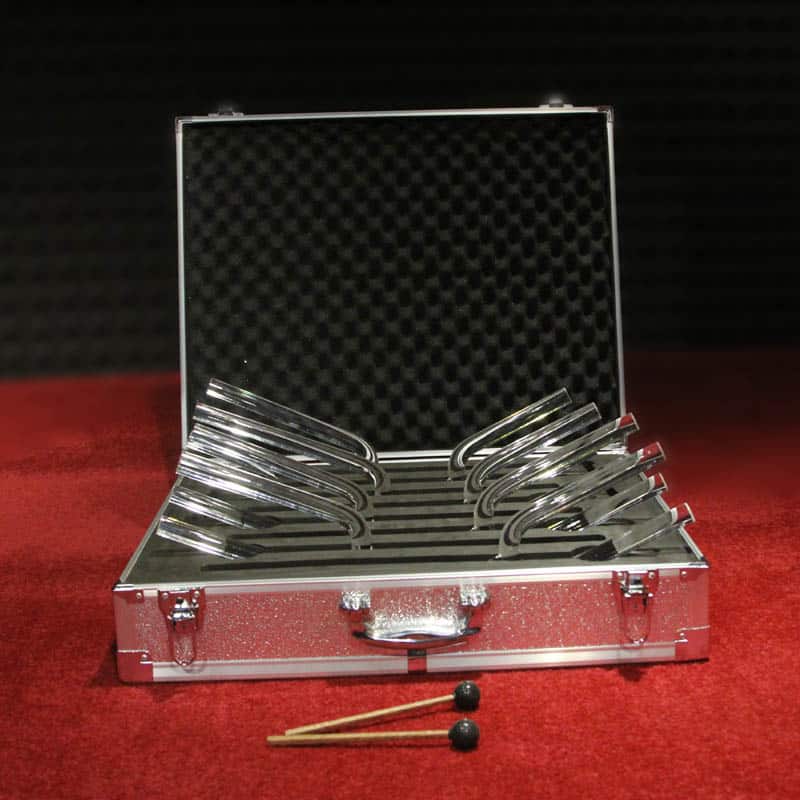Like the ancient Tibetan monks who discovered the transformative power of singing bowls, you're about to initiate a journey into the healing potential of sound and music. You'll find that mindfulness doesn't always require silence; in fact, specific frequencies and rhythms can guide your consciousness toward deeper states of awareness. Whether you're struggling with stress, seeking emotional balance, or simply wanting to enhance your meditation practice, the science of sound healing offers proven pathways to inner peace. What you'll discover about your body's natural resonance with healing frequencies might surprise you.
Key Takeaways
�?Therapeutic sound frequencies between 432-528 Hz synchronize brainwaves, promoting relaxation and shifting the mind from active beta to meditative alpha states.
�?Regular practice with calming soundscapes and ambient music reduces anxiety, improves mental clarity, and enhances overall mindfulness experiences.
�?Creating a dedicated space with quality sound tools like singing bowls or nature recordings establishes a consistent environment for mindful sound meditation.
�?Combining sound healing with breathing exercises during daily rituals helps deepen meditation and strengthens the mind-body connection.
�?Listening to music at 60-80 beats per minute facilitates focused attention and supports sustained mindfulness practices.
The Science Behind Sound Healing

Sound waves interact with our bodies on a cellular level, affecting our brainwave patterns, nervous system, and overall physiological state. Through advanced neuroscience sound research, scientists have discovered that specific frequencies can synchronize your brain's electrical activity, leading to altered states of consciousness and deep relaxation. When you're exposed to therapeutic sounds, your brain can shift from beta waves (associated with active thinking) to alpha or theta waves (linked to meditation and healing).
Vibrational therapy works by introducing specific sound frequencies that resonate with different parts of your body. You'll find that each organ and tissue has its own natural frequency, and when you expose them to matching sound waves, they'll respond by returning to their ideal state of vibration. This process, known as entrainment, can help reduce stress, lower blood pressure, and improve cellular function. Research shows that when you experience these healing frequencies, your body releases endorphins and reduces cortisol levels, creating a natural path to wellness. You're fundamentally using sound as a tool to reset your body's internal rhythm and promote healing from within.
Ancient Sound Practices
Throughout history, ancient civilizations developed sophisticated sound healing practices that continue to influence modern therapeutic techniques. You'll discover that these time-honored methods, including ancient mantras and sacred instruments, have been carefully preserved and passed down through generations. When you explore these practices, you'll find that they're deeply rooted in spiritual traditions that understood the profound connection between sound vibrations and human consciousness.
- Tibetan singing bowls, crafted from seven sacred metals, create resonant frequencies that you can feel throughout your entire body
- Ancient Egyptian priestesses used sistrum rattles and ceremonial drums to induce altered states of consciousness
- Native American medicine men employed rhythmic drumming and vocal toning to facilitate healing ceremonies
- Hindu practitioners developed complex Sanskrit chants that you can still hear in modern meditation centers
Many of these traditional practices have stood the test of time because they're remarkably effective at promoting relaxation and inner balance. You'll notice that sacred instruments from different cultures often share similar principles, suggesting that our ancestors independently discovered the healing properties of specific sound frequencies and rhythmic patterns.
Types of Healing Frequencies

Modern research has identified specific sound frequencies that can influence your physical and mental well-being. When you experience therapeutic sounds, you'll discover that different frequency ranges affect various aspects of your body and consciousness. Solfeggio frequencies, which include six primary tones between 396 Hz and 963 Hz, have become particularly renowned for their healing properties.
You'll find that sound vibrations from tools like tuning forks create harmonic resonance within your body's tissues and energy systems. These vibrations can help reduce stress, promote relaxation, and even assist with physical healing. When you listen to healing music calibrated to specific frequencies, you're tapping into an advanced form of audio healing that ancient cultures understood intuitively. For instance, the 528 Hz frequency, often called the "love frequency," is believed to repair DNA and promote overall wellness, while 432 Hz aligns with the natural rhythms of the universe. Through consistent exposure to these therapeutic frequencies, you can experience deeper meditation states, improved sleep patterns, and enhanced emotional balance. The key is finding the right combination of frequencies that resonates with your specific needs.
Sound Tools for Meditation
You'll find an impressive array of meditation tools that can transform your mindfulness practice, including crystal singing bowls that produce pure, resonant tones and nature recordings that bring the peaceful sounds of forests, oceans, and rainfall into your meditation space. Modern technology has expanded these options with binaural beats, which use precisely calibrated audio frequencies to help guide your brain into specific meditation states. Whether you're drawn to the ancient wisdom of Tibetan singing bowls or the scientific precision of digital sound technology, you'll discover that these tools can create an ideal sonic environment for deeper meditation experiences.
Crystal and Singing Bowls
Resonating with pure, harmonic frequencies, crystal and singing bowls have emerged as powerful tools for meditation and sound healing practices. When you strike or circle the rim of these instruments, they produce sustained vibrations that can help align your energy centers and promote deep relaxation. Crystal bowls, crafted from pure quartz crystal, offer distinct crystal properties that amplify healing intentions, while traditional Tibetan singing bowls, made from metal alloys, create rich, multilayered tones through various singing bowl techniques.
You'll discover that these sacred instruments can transform your meditation practice in several ways:
- The bowls' sustained frequencies help entrain your brainwaves to more peaceful, meditative states
- Different notes correspond to specific chakras, allowing for targeted energy work
- The vibrations create a sound bath that can be felt throughout your entire body
- Regular practice with singing bowls can enhance your focus and reduce stress levels
Nature Sound Recordings
Natural soundscapes surround us with healing vibrations that our ancestors knew well – from gentle rainfall and flowing streams to rustling leaves and morning birdsong. These authentic sounds carry profound therapeutic properties that you'll find particularly beneficial during meditation and mindfulness practices.
When you can't access outdoor environments directly, high-quality nature sound recordings offer a powerful alternative. You'll discover that forest ambiance recordings, complete with gentle breezes and distant bird calls, can lower your stress levels and improve focus just as effectively as being in the woods. Ocean waves, with their rhythmic patterns and deep resonance, help regulate your breathing and can guide you into deeper states of relaxation. What's remarkable is how these recorded sounds activate the same neurological pathways as real nature experiences, triggering your body's natural relaxation response.
To get the most benefit, you'll want to use high-fidelity recordings that capture the full spectrum of natural sounds. Consider creating a dedicated listening space where you can immerse yourself in these healing soundscapes, allowing nature's rhythms to restore your inner balance and enhance your meditation practice.
Binaural Beats Technology
Beyond nature's organic soundscapes lies a fascinating domain of engineered audio technology called binaural beats. When you listen to slightly different frequencies in each ear through headphones, your brain creates a third tone that can help guide your mental state into specific brainwave patterns. This process, known as brainwave synchronization, has become increasingly popular among meditation practitioners and those seeking deeper states of relaxation.
You'll find that binaural beats technology offers various frequency ranges designed to produce different cognitive and emotional effects. Whether you're looking to enhance focus, reduce anxiety, or achieve deeper meditation states, there's likely a specific frequency combination that can support your goals.
- Delta waves (0.5-4 Hz) support deep sleep and healing
- Theta waves (4-8 Hz) promote deep meditation and creativity
- Alpha waves (8-13 Hz) help with relaxation and stress reduction
- Beta waves (13-30 Hz) enhance focus and mental alertness
You can experience these benefits by using quality headphones and selecting recordings that match your intended purpose. Remember that consistent practice with binaural beats can lead to more predictable and beneficial results over time.
Creating Your Sound Environment

When you begin creating your sound environment for mindfulness practice, it is vital to carefully select and arrange the acoustic elements that will surround you. Start by choosing instruments and sounds that resonate with your personal energy and emotional needs, whether that's the gentle tones of singing bowls, the soothing ripple of water features, or the ethereal sounds of wind chimes.
Creating ambiance isn't just about playing random peaceful sounds – it's about crafting a deliberate atmosphere that supports your mindfulness journey. You'll want to take into account the room's acoustics, the time of day you'll practice, and any potential external noise that might interfere with your session. Position your sound sources strategically, perhaps using multiple speakers for an immersive experience, or create zones within your space for different types of sonic meditation.
Don't forget to test your sound environment at various volumes and times of day. You might find that morning calls for brighter, more energizing tones, while evening practices benefit from deeper, more grounding frequencies. The key is to develop a flexible, personalized soundscape that you can adjust as your practice evolves.
Benefits of Sound Therapy
When you engage with sound therapy, you'll discover its remarkable ability to support physical healing and accelerate recovery through vibrations that can help reduce inflammation and promote cellular regeneration. Your mental clarity and focus will sharpen as specific sound frequencies help synchronize your brainwaves and create ideal conditions for concentration and productivity. Through carefully selected healing sounds, you'll experience profound emotional release as sonic vibrations help dissolve stress patterns, allowing tension to melt away while promoting a deep sense of inner peace and balance.
Physical Healing and Recovery
Sound therapy's healing vibrations can profoundly impact your physical recovery and well-being. When you're exposed to specific frequencies and healing techniques, your body's physical energy begins to align with these therapeutic sounds, promoting natural healing processes. You'll notice that sound therapy works directly with your body's cellular structure, helping to reduce inflammation and accelerate tissue repair while promoting overall balance in your system.
The restorative power of sound therapy manifests in several measurable ways that support your body's healing journey:
- Increased blood flow and circulation, which delivers essential nutrients to injured areas and removes cellular waste more efficiently
- Enhanced production of nitric oxide, a compound that helps reduce pain and supports cardiovascular health
- Accelerated bone healing through specific low-frequency vibrations that stimulate cell regeneration
- Reduced muscle tension and improved flexibility as sound waves penetrate deep into tissue layers
When you incorporate sound therapy into your recovery routine, you're tapping into an ancient yet scientifically supported method of healing that works with your body's natural frequencies to promote physical restoration and maintain peak wellness.
Mental Clarity and Focus
Beyond its physical benefits, sound therapy can sharpen your mental acuity and enhance cognitive performance. When you engage with specific sound frequencies and rhythms, your brain begins to synchronize with these patterns, leading to improved mindful concentration and clearer thought processes. You'll notice that regular sound therapy sessions help you maintain focus during challenging tasks while reducing mental fatigue and brain fog.
Through deliberate auditory awareness, you'll develop a heightened sense of presence that carries over into your daily activities. The structured sounds create an ideal environment for your brain to process information more efficiently, helping you filter out distracting thoughts and external noise. You'll find yourself better equipped to tackle complex problems and retain new information, as the therapeutic frequencies help balance your neural activity. When you're exposed to carefully selected sound frequencies, your brain naturally shifts into a state of alert relaxation, where learning and problem-solving abilities peak. This cognitive enhancement isn't temporary – with consistent practice, you'll develop lasting improvements in your ability to concentrate and maintain mental clarity throughout your day.
Emotional Stress Release
Through the transformative power of sound therapy, you'll discover profound relief from emotional burdens and accumulated stress. When you immerse yourself in healing frequencies and resonant tones, your nervous system begins to recalibrate, allowing for deep emotional release. Sound therapy works as a gentle yet powerful catalyst for stress management, helping you process and release trapped emotions that you've been carrying.
The vibrational patterns of therapeutic sounds create an environment where emotional healing can naturally unfold, enabling you to:
- Release deep-seated emotional blockages through specific sound frequencies that resonate with different emotional states
- Experience a safe space for processing difficult feelings without the need for verbal expression
- Access a state of emotional balance through rhythmic sound patterns that calm your nervous system
- Develop greater emotional resilience by regularly engaging with healing sounds that support your well-being
You'll find that consistent sound therapy sessions become an invaluable tool in your emotional wellness journey, providing a structured approach to releasing stress while building a stronger connection to your emotional landscape.
Daily Sound Rituals

Creating a daily ritual with healing sounds can transform your mindfulness practice from sporadic sessions into a reliable source of peace and clarity. When you establish consistent sound mindfulness practices, you'll develop a deeper connection to the present moment and create powerful anchors for emotional stability throughout your day.
Begin your morning by selecting specific sounds that resonate with your intentions, whether it's gentle singing bowls, nature recordings, or instrumental music. You'll want to designate a quiet space where you won't be interrupted, and set aside 10-15 minutes for your ritual practices. As you listen, focus on how the sounds interact with your breath, allowing each note to guide your awareness deeper into the present moment.
Throughout the day, you can incorporate mini sound rituals during changes or breaks. Try using a small bell or chime before important meetings, or play calming frequencies during your lunch break. You'll find that these intentional sound moments serve as reset buttons, helping you maintain emotional balance and mental clarity as you navigate daily challenges. Remember to document which sounds work best for different situations, allowing your practice to evolve naturally.
Music for Deep Relaxation
Music designed for deep relaxation harnesses specific frequencies and rhythms that naturally slow your brainwaves and ease physical tension. When you're seeking profound stress relief, ambient music can serve as a powerful tool in your relaxation techniques arsenal. You'll find that carefully composed pieces, featuring gentle harmonies and sustained tones, help guide your mind into a more peaceful state.
To maximize your relaxation experience with healing music, you'll want to create an ideal listening environment that supports deep unwinding. The right musical selection, combined with proper positioning and mindful attention, can transform a simple listening session into a therapeutic journey.
- Choose tracks with frequencies between 432 Hz and 528 Hz, which are known to promote healing and relaxation
- Select pieces that maintain a steady tempo of 60-80 beats per minute to match a resting heart rate
- Look for compositions featuring nature sounds blended with gentle instrumental harmonies
- Opt for extended tracks (15-30 minutes) to allow sufficient time for your body to fully relax
You'll discover that consistent practice with relaxation music can lead to improved sleep quality, reduced anxiety, and enhanced overall well-being.
Sound Healing at Home

While professional sound therapy sessions can be beneficial, you don't need to visit a practitioner to experience the healing power of sound. You can create personal soundscapes right in your home that promote relaxation, focus, and emotional well-being. By combining natural sounds, gentle music, and mindful listening practices, you'll develop a healing environment that supports your daily wellness routine.
Start by identifying sounds that resonate with you personally, such as rainfall, ocean waves, or wind chimes. You can enhance your home soundscapes by incorporating singing bowls, tuning forks, or even your own voice through humming or toning exercises. Position speakers strategically throughout your space to create an immersive experience, or use headphones for a more intimate session. When you're designing your sound environment, remember that consistency matters more than complexity.
Set aside dedicated time each day to engage with your chosen sounds, allowing yourself to fully absorb their therapeutic qualities. You'll find that regular practice with intentional listening helps reduce stress, improves concentration, and creates a sanctuary within your living space that supports your overall well-being.
Conclusion
You'll find that sound healing naturally aligns with your daily rhythms, just as you've discovered the perfect frequency that resonates with your meditation practice. As you continue exploring these healing vibrations, you're not just listening – you're participating in an ancient tradition that's scientifically proven to reduce stress and enhance well-being. By incorporating these sound practices into your routine, you're creating a harmonious space where mindfulness and healing converge.







